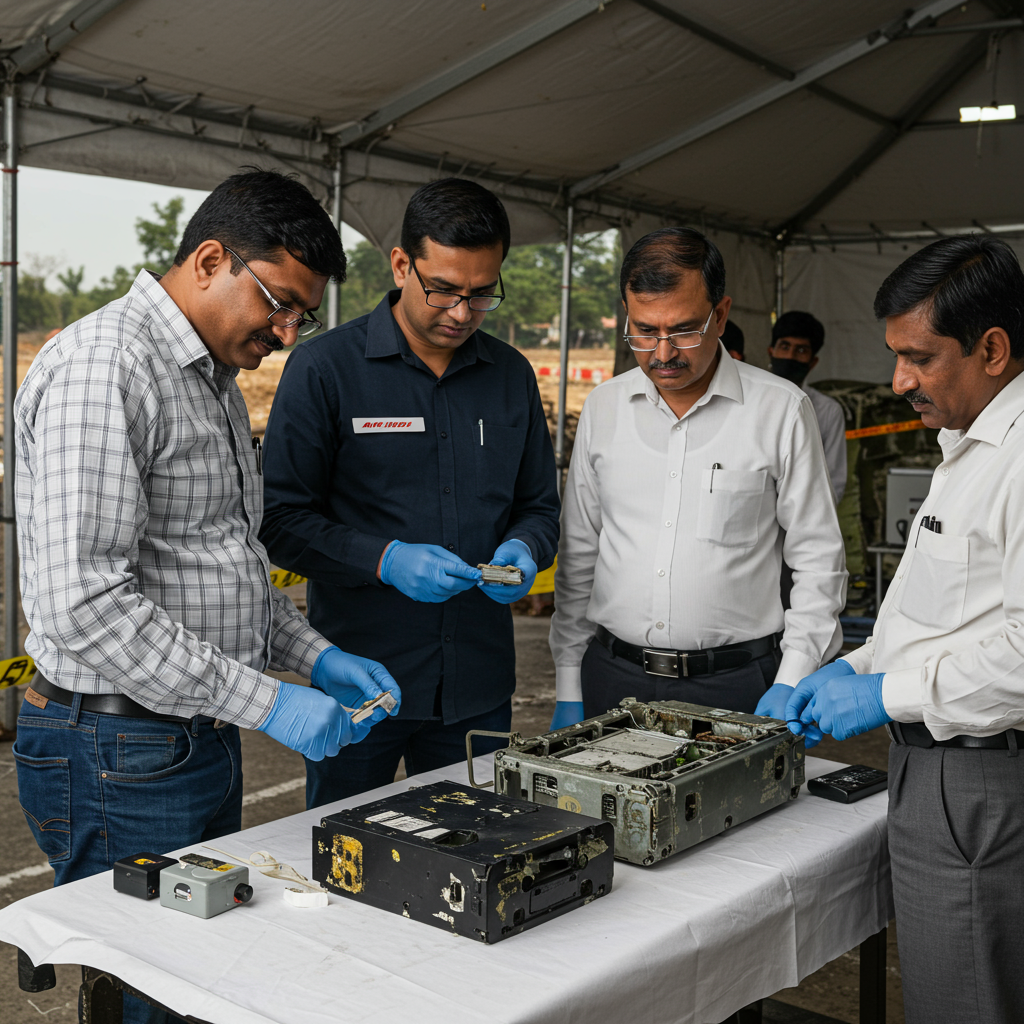Investigators probing the deadly Air India flight crash have recovered the cockpit voice recorder (CVR), a critical breakthrough expected to provide vital clues into what caused last week’s disaster near Ahmedabad, India. This follows the earlier recovery of the flight data recorder (FDR), with both devices forming the crucial “black box” used to reconstruct the final moments of the flight.
The Air India Boeing 787-8 Dreamliner, bound for London Gatwick, crashed dramatically into a doctors’ accommodation building shortly after taking off from Ahmedabad’s Sardar Vallabhbhai Patel International Airport last Thursday. The impact resulted in a devastating loss of life, killing all but one of the 242 passengers and crew onboard, along with 30 people on the ground. A total of 270 bodies have been recovered from the wreckage.
Unlocking the Secrets of the “Black Box”
The recovery of both the CVR and FDR is paramount for investigators. Despite their common name, these devices are actually painted bright orange with reflective strips for easier location in debris and are built to withstand severe crash forces.
Cockpit Voice Recorder (CVR): This device captures all audio within the cockpit, including conversations between the pilots, alarms, engine sounds, and communications with air traffic control. It can record the crucial moments leading up to an incident. Analysis involves creating a meticulous, timestamped transcript, though the sensitive audio recordings themselves are never publicly released.
Flight Data Recorder (FDR): Found first on Friday morning, reportedly on a building rooftop, the FDR logs technical parameters like altitude, speed, engine performance, control inputs, and flap/gear configurations.
Together, the data from the CVR and FDR allows accident investigators to build a detailed picture of the aircraft’s state and crew actions in its final seconds.
Pilot’s Reported Last Words Emerge
Early reports citing the cockpit recordings indicate the pilot, Captain Sumeet Sabharwal, issued a “Mayday” call just before the crash. Desperate communications reportedly revealed a struggle with the aircraft, with reports suggesting phrases like “no thrust” and “unable to lift.” One report captured the pilot’s reported last words as “Thrust not achieved… falling… Mayday! Mayday! Mayday!”. These details, if confirmed by official analysis, point towards a critical issue immediately after takeoff.
Intensive Investigation Underway
The investigation into the crash is being led by India’s Aircraft Accident Investigation Bureau (AAIB). They are receiving assistance from international teams, including experts from the US National Transportation Safety Board (NTSB) and the UK. The NTSB’s involvement is standard protocol due to the aircraft being American-made (Boeing). Representatives from Boeing and the US Federal Aviation Administration (FAA) have also reportedly visited the crash site.
Initial areas of focus for the technical investigation reportedly include potential engine failure, issues with the aircraft’s wing flaps, problems with the landing gear remaining open, and even the possibility of a bird strike. Analyzing the black box data is crucial to confirm or rule out these theories and determine the definitive cause.
In parallel, the Indian government has established a high-level committee to examine the incident’s reasons. This committee is tasked with submitting a preliminary report within three months and is expected to propose new standard operating procedures (SOPs) to help prevent future tragedies.
The Painful Process of Identifying Victims
Amidst the technical investigation, families are grappling with the devastating human toll. The process of identifying victims has been slow and painstaking, largely relying on DNA matching because many bodies were severely burned in the crash.
As of Monday, over 90 victims had been identified through DNA analysis, with 47 bodies returned to their families. Victims included individuals of various nationalities, including Indian, British, Portuguese, and Canadian passengers, along with the crew. A notable identified victim was Vijay Rupani, a former chief minister of Gujarat. For many families, the agonizing wait for identification and the return of their loved ones’ remains continues, adding immense trauma to their grief.
This disaster marks the first-ever fatal crash involving a Boeing 787 Dreamliner model. Following the incident, Air India was ordered to conduct additional maintenance checks on its fleet of 787s, while the manufacturer Boeing has sent a team to Ahmedabad to assist the investigation and scaled back its presence at a major airshow.
The recovery and analysis of the CVR and FDR are critical steps towards understanding the sequence of events that led to this tragedy and hopefully providing answers to the many questions surrounding the final moments of Air India flight AI171.




